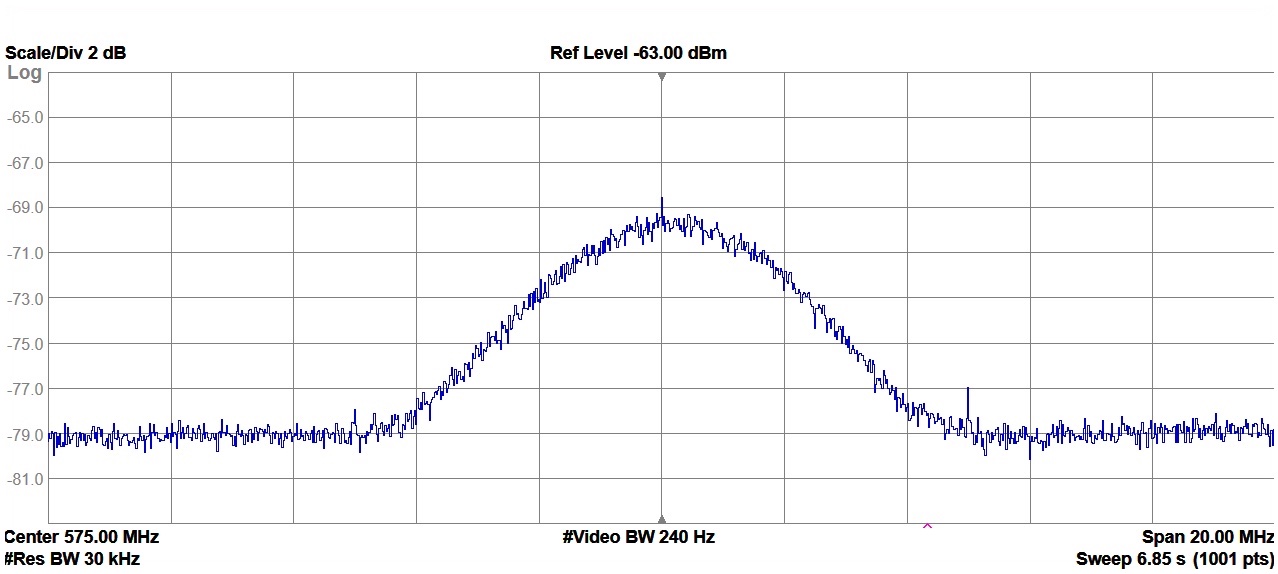IoW_20230515 - Gaia
Image of the Week
Goonhilly station steps in to save Gaia science data
Figure 1. Downlink spectrum of Gaia acquired at Goonhilly during the Gaia pass 13-14/04/2023. Image credits: Goonhilly station
The Gaia mission uses the ESA deep space network (DSN) ground stations for communicating with the spacecraft. These stations are shared with other missions such as Mars Express, ExoMars Trace Gas Orbiter, Solar Orbiter and BepiColombo, and are in high demand. Sometimes the available station tracking time is not sufficient for Gaia’s needs and so, in order to prevent science data loss, the operations team have looked for alternatives to the ESA DSN. Previously the mission has used the NASA DSN, but this resource is also in high demand for the many NASA missions including the newly launched James Webb Space Telescope.
In 2023 the ESA DSN will also support the JUICE and EUCLID missions, making the scheduling of station time even more difficult. For this reason ESA has worked with the Goonhilly station in Cornwall, England to validate their satellite antennas for use with several ESA missions, including Gaia. Goonhilly has a long history of supporting spacecraft communications, including the Apollo moon landings. In 2022 there was an extensive test campaign to demonstrate that Goonhilly was compatible with Gaia operations, successfully receiving data from a distance of 1.5 million kilometers without any losses.
All of the planning and testing has proved its worth. In April 2023, with the launch of the JUICE spacecraft rightly assuming highest priority for ESA DSN station time, there was insufficient availability for Gaia to download all of its scientific data stored on-board for several days. It therefore fell to Goonhilly to step up and support the mission in order to ensure continuity of operations and to acquire the precious science data from the Gaia satellite. Furthermore, at the end of April and into May 2023 Gaia will enter a period where an increased amount of data will be acquired by the instrument, known as a Galactic Plane Scan. The Galactic Plane Scan is the moment Gaia's telescopes scan across the many, many stars in the Galactic Plane and lots of observational data need downloading. During this time Gaia will again be making use of the Goonhilly station to help get the maximum amount of data to the ground and ultimately into the mission science archive.
Credits: Story written by Ed Serpell, on behalf of Gaia's flight operations team in Darmstadt, Germany.
[Published: 15/05/2023]
- Removed a total of (6) style text-align:center;
- Removed a total of (3) style text-align:justify;
Image of the Week Archive
- Removed a total of (1) border attribute.
- Removed a total of (1) cellpadding attribute.
- Removed a total of (1) cellspacing attribute.








































 Sign in
Sign in
 Science & Technology
Science & Technology
